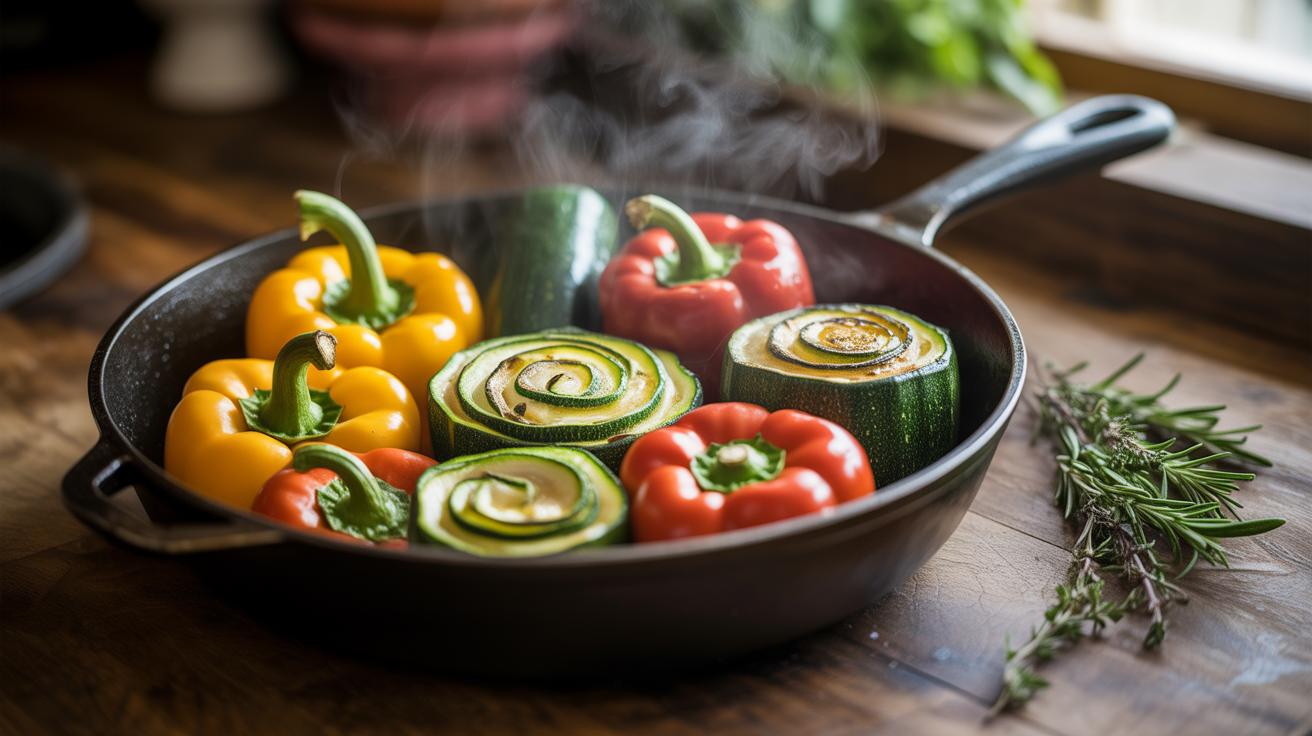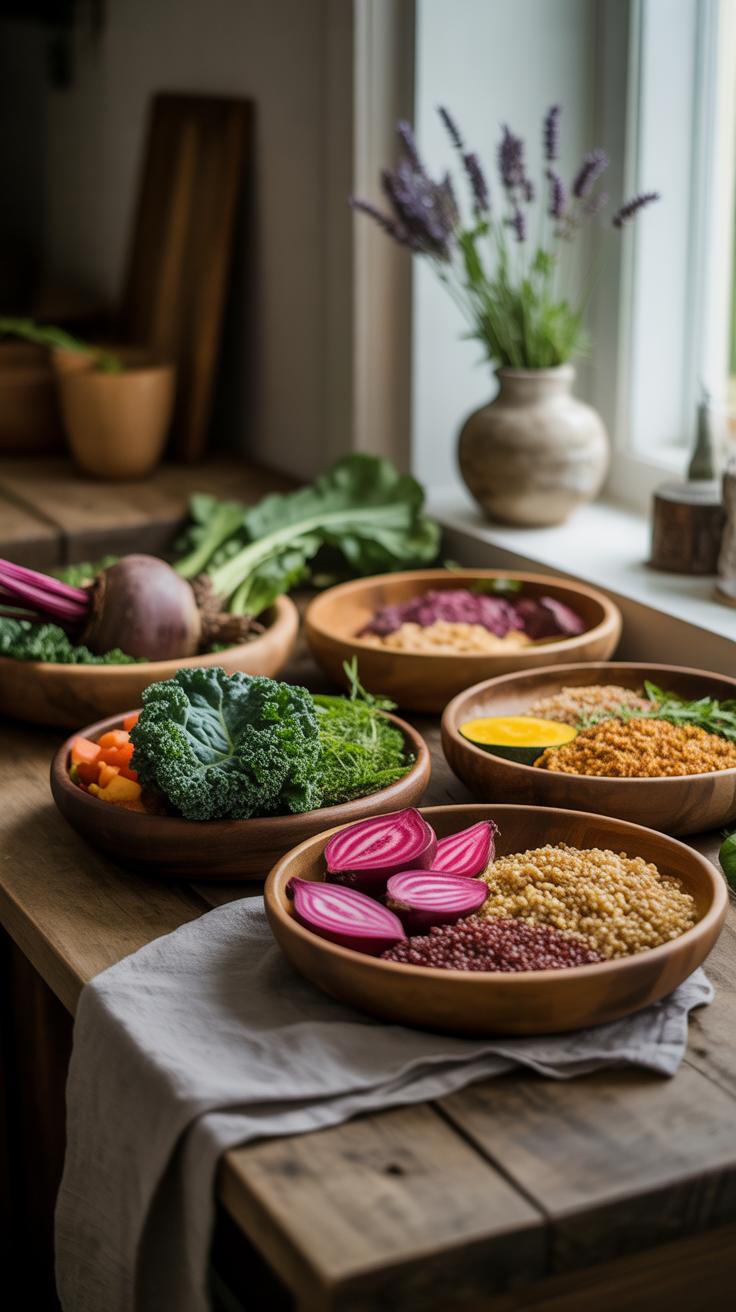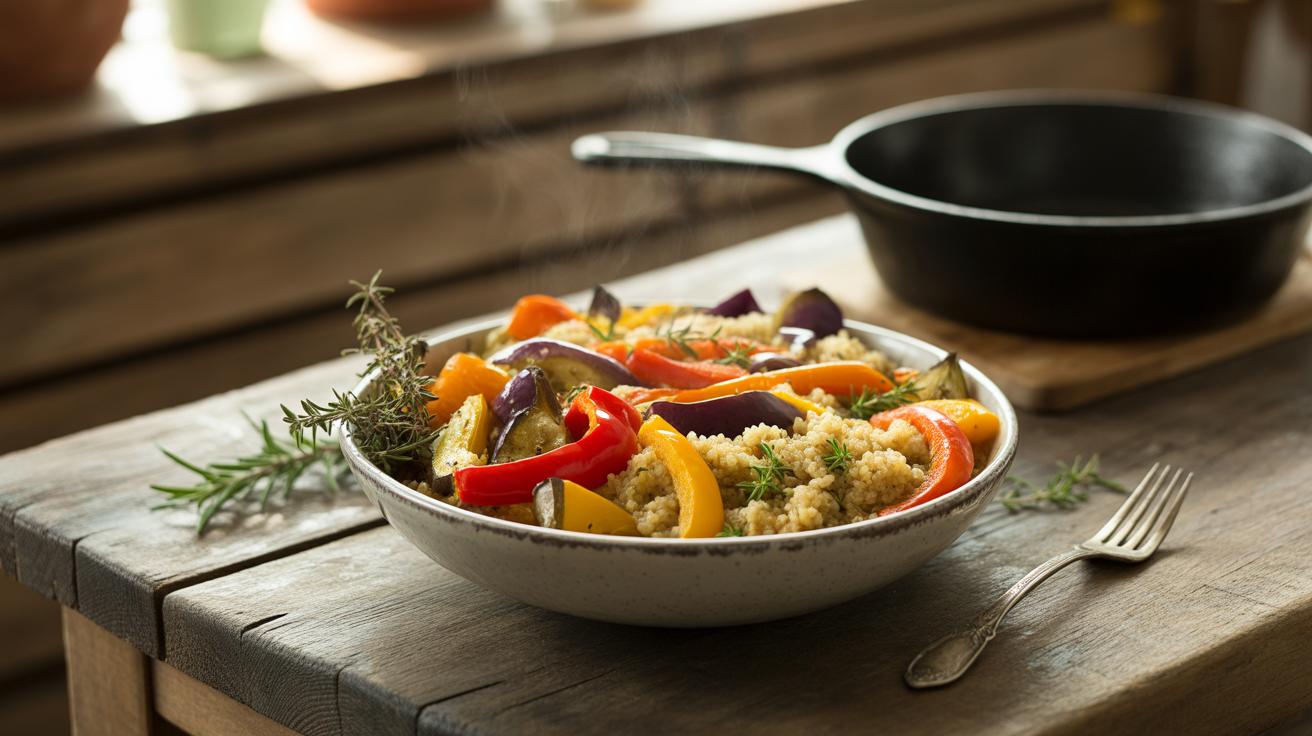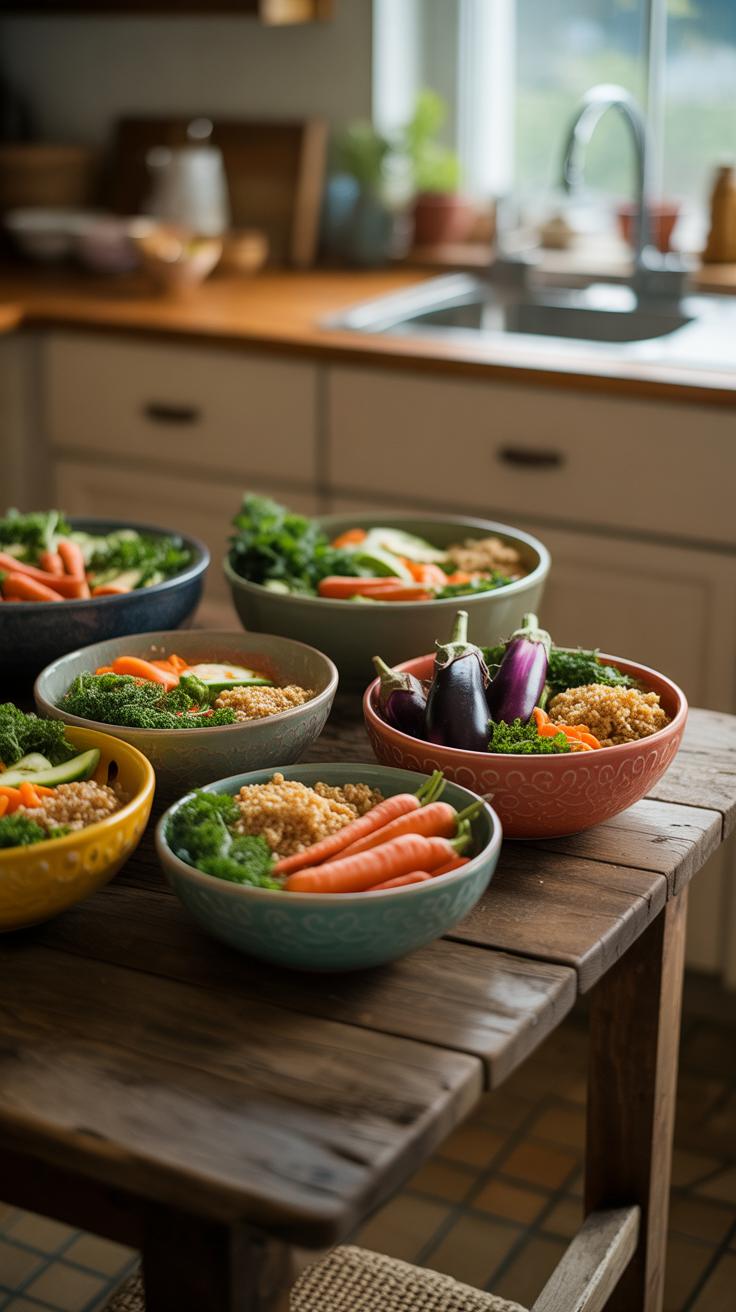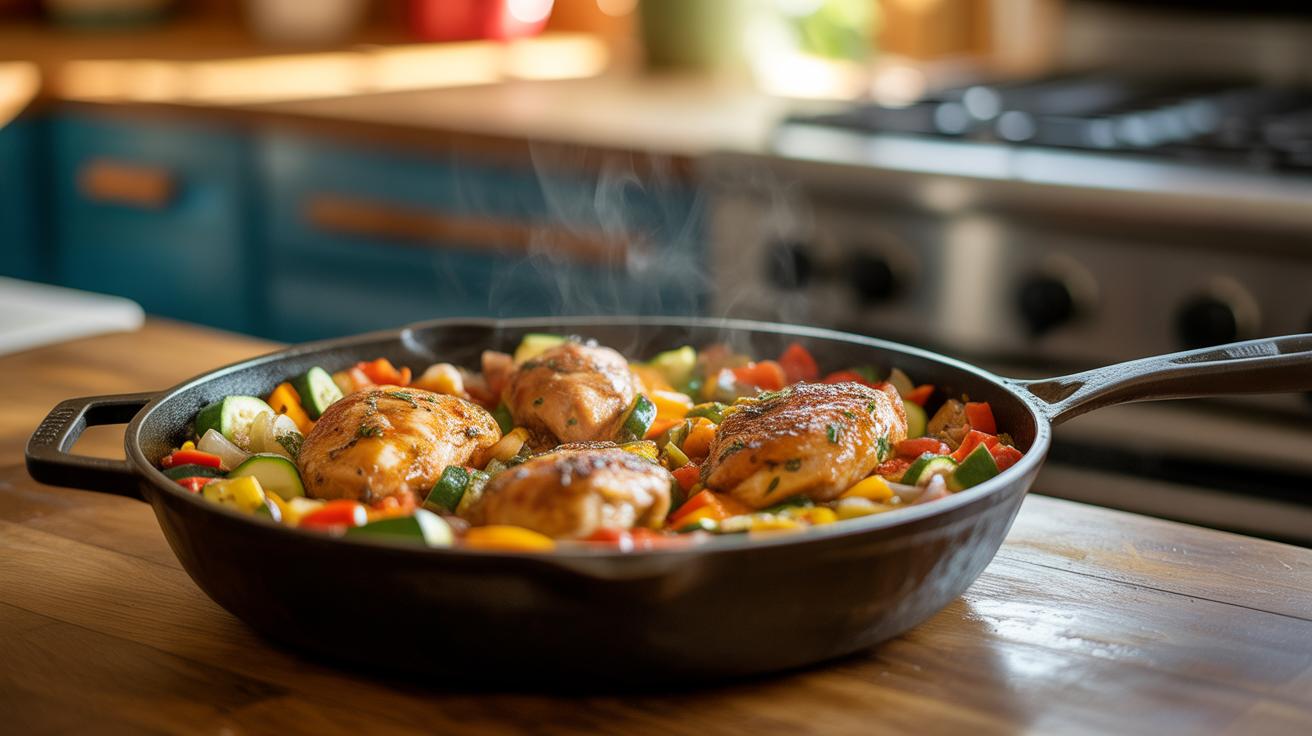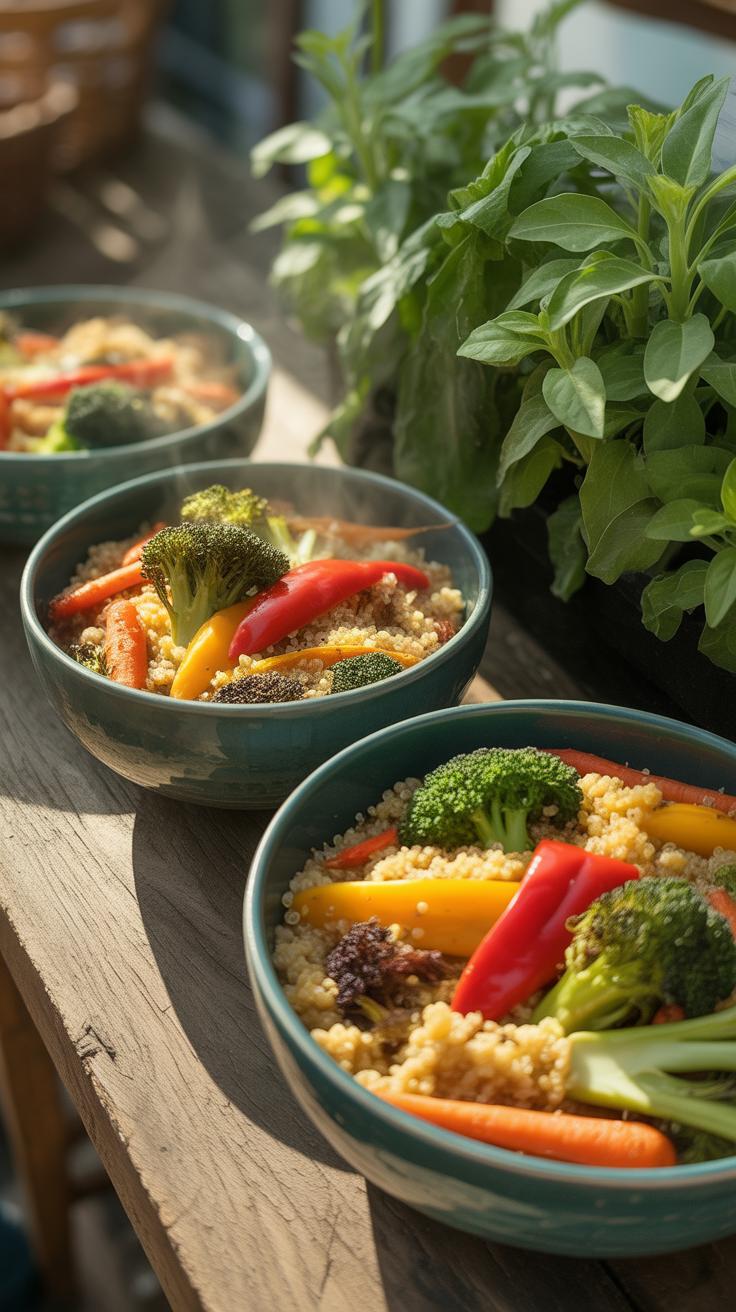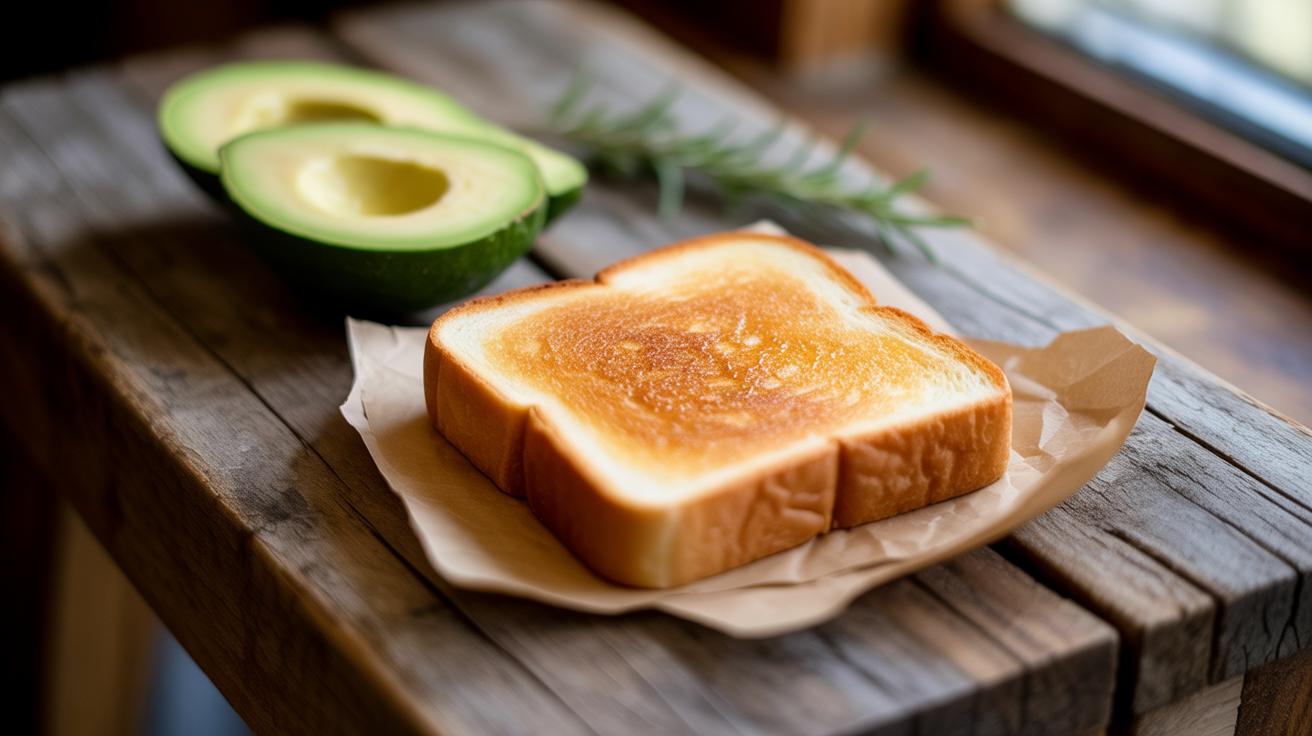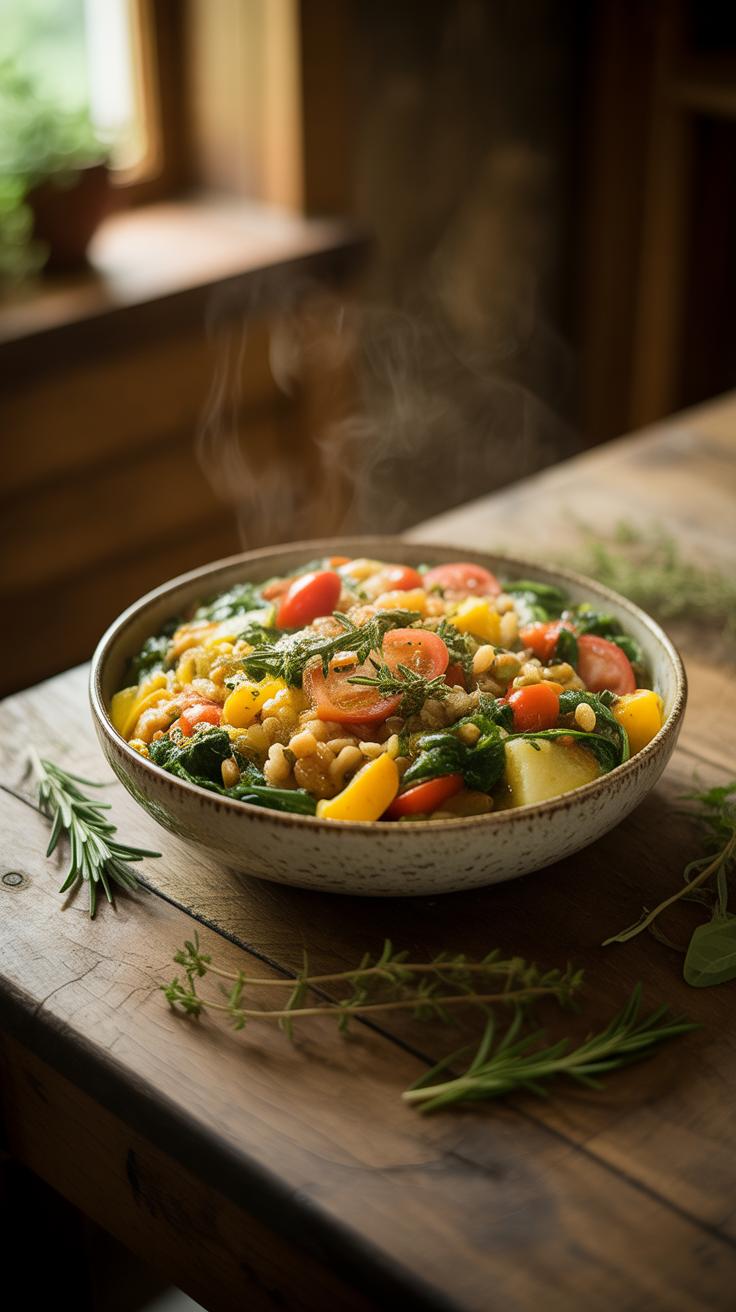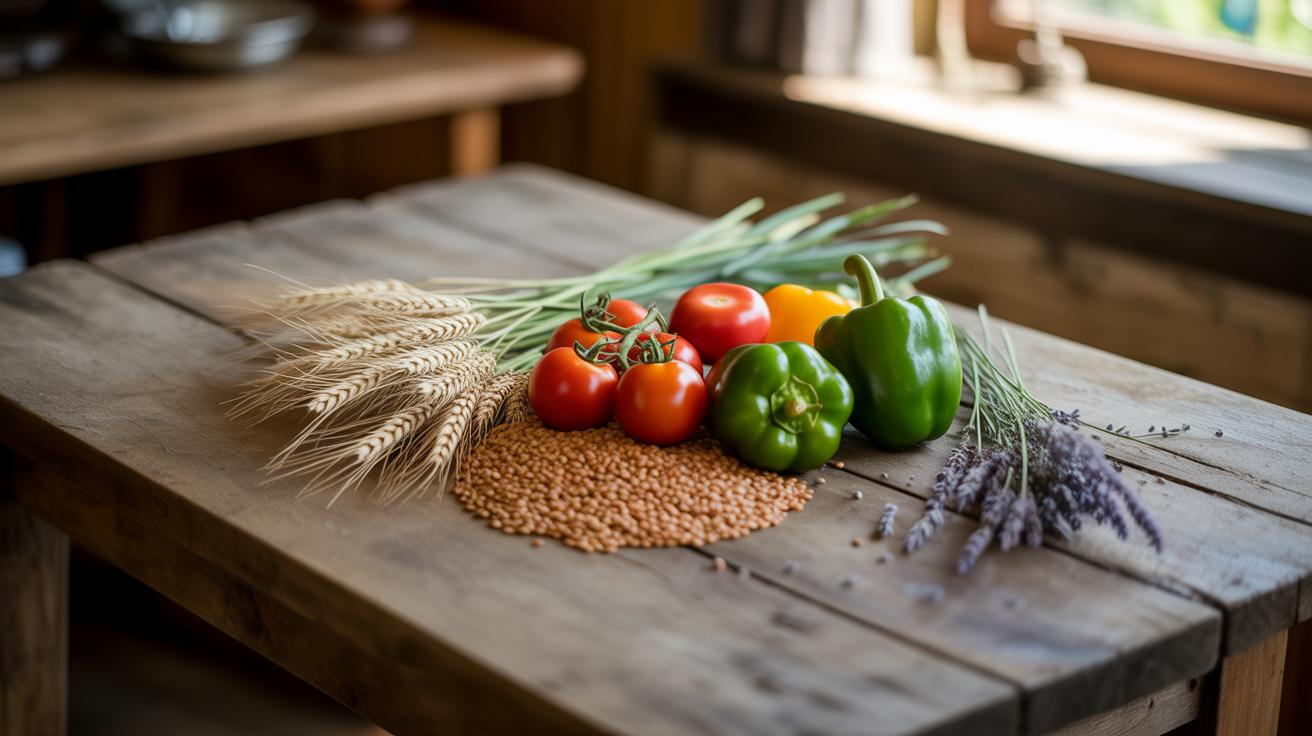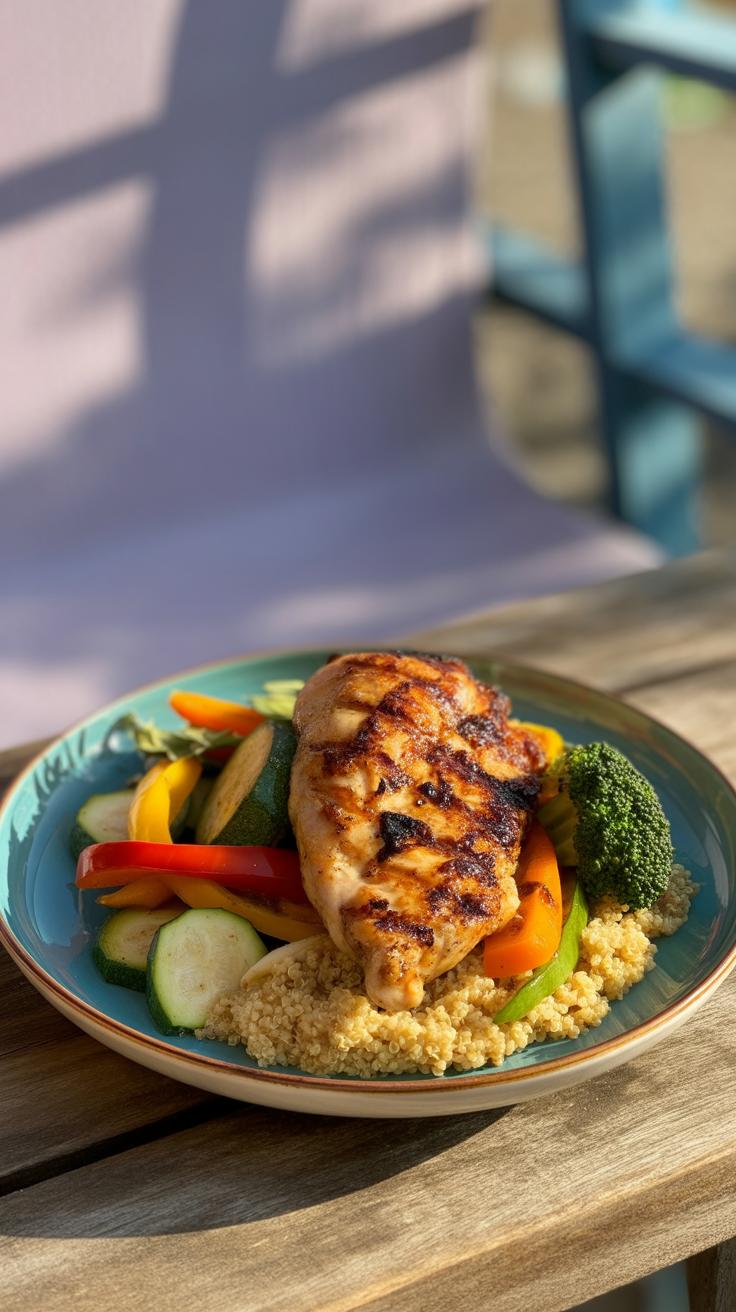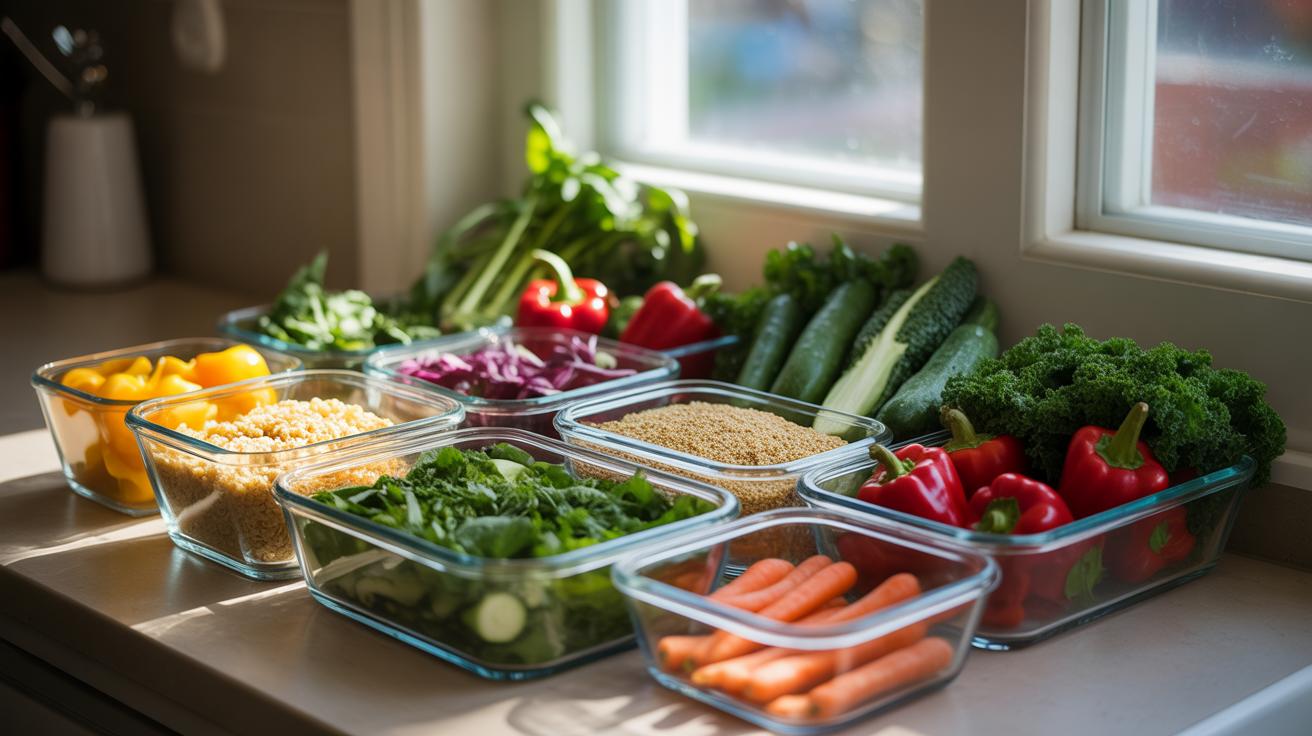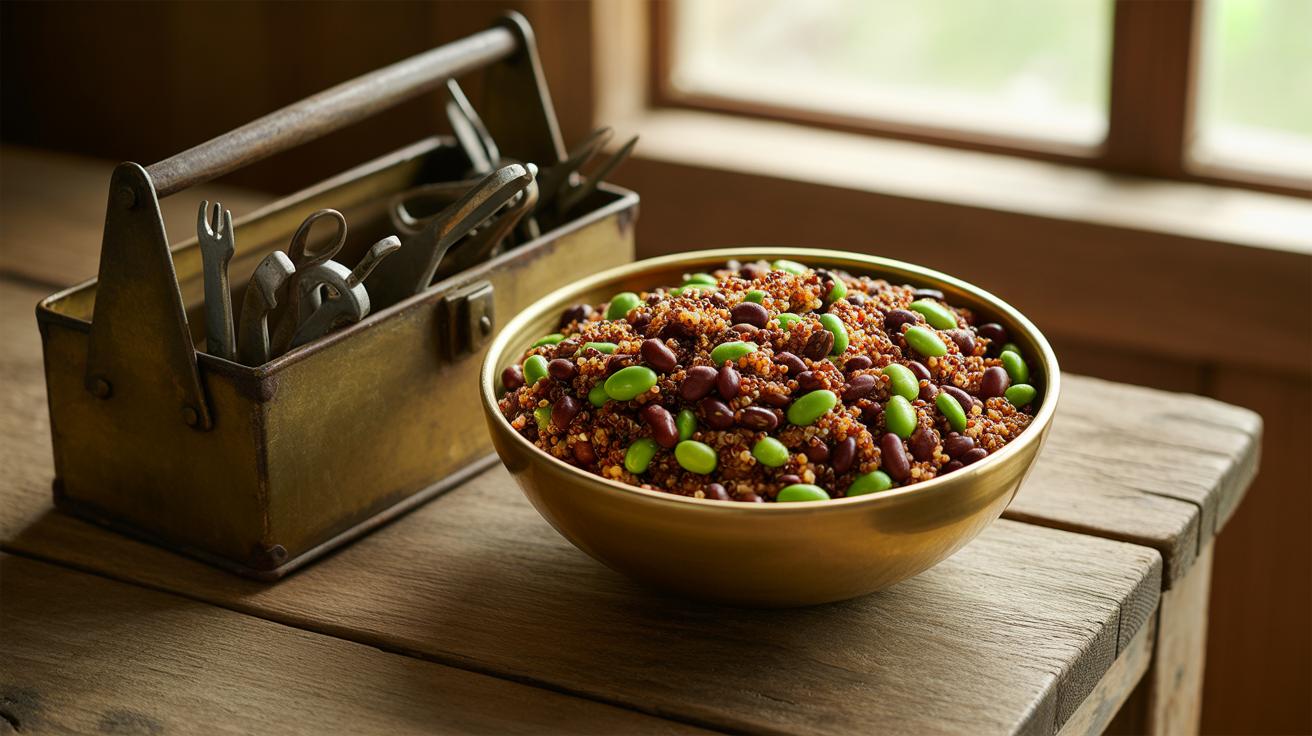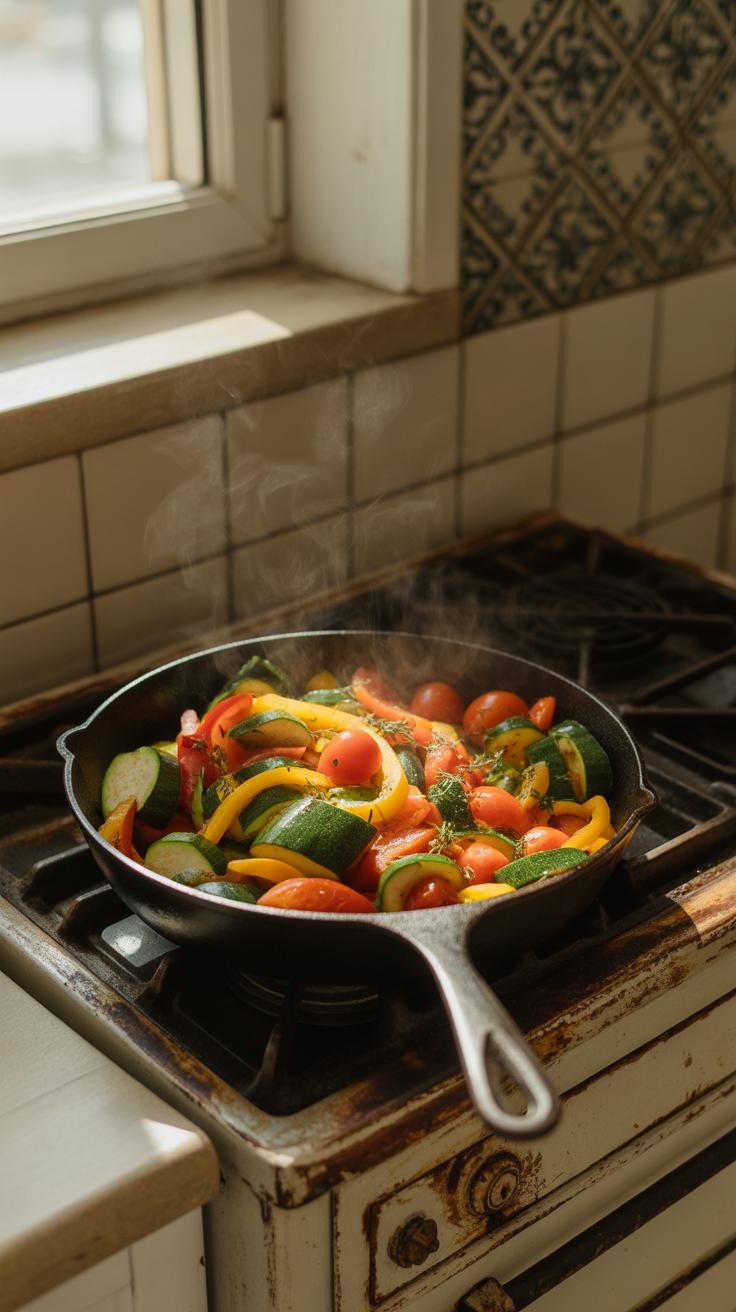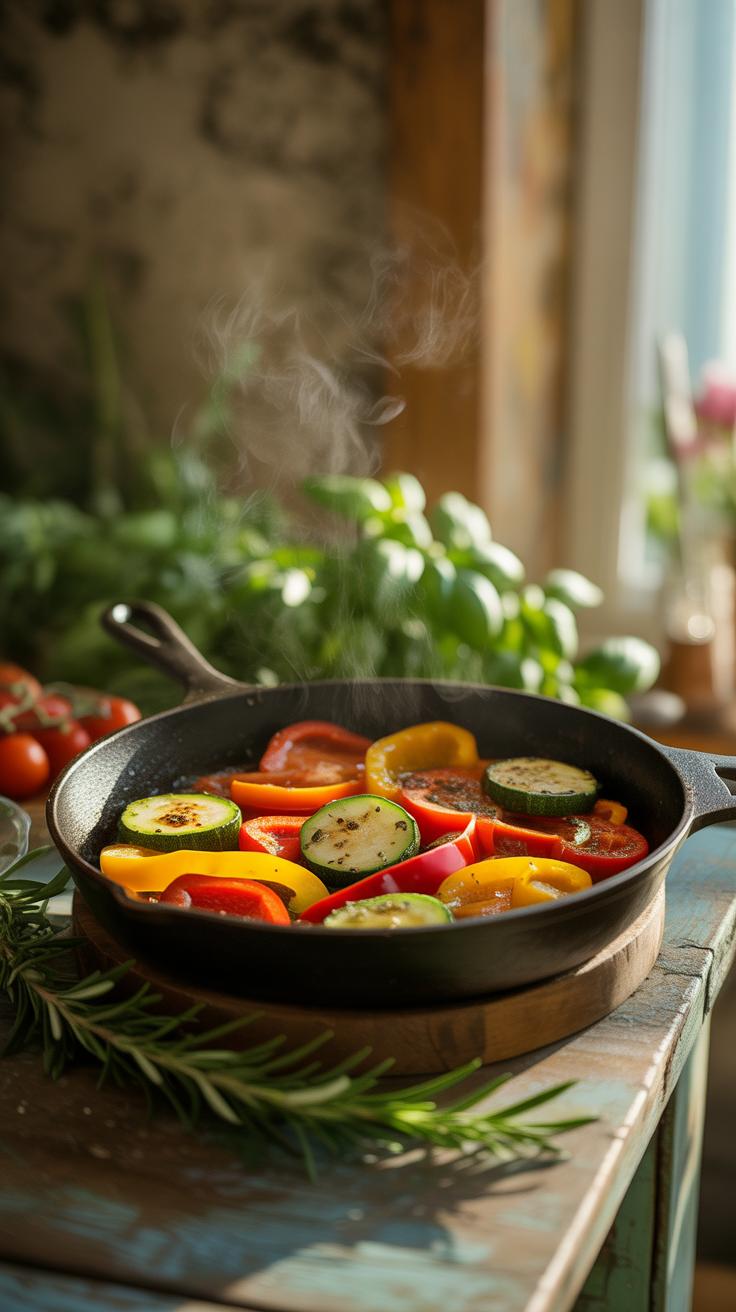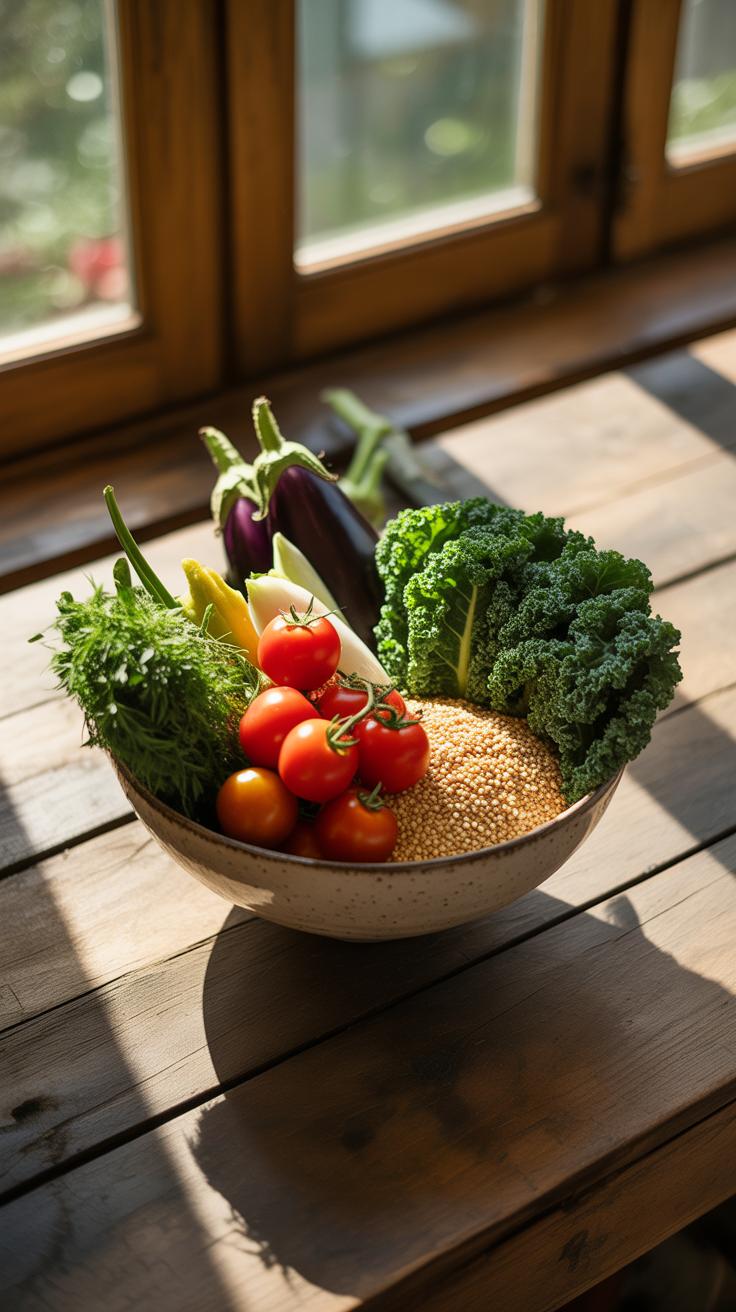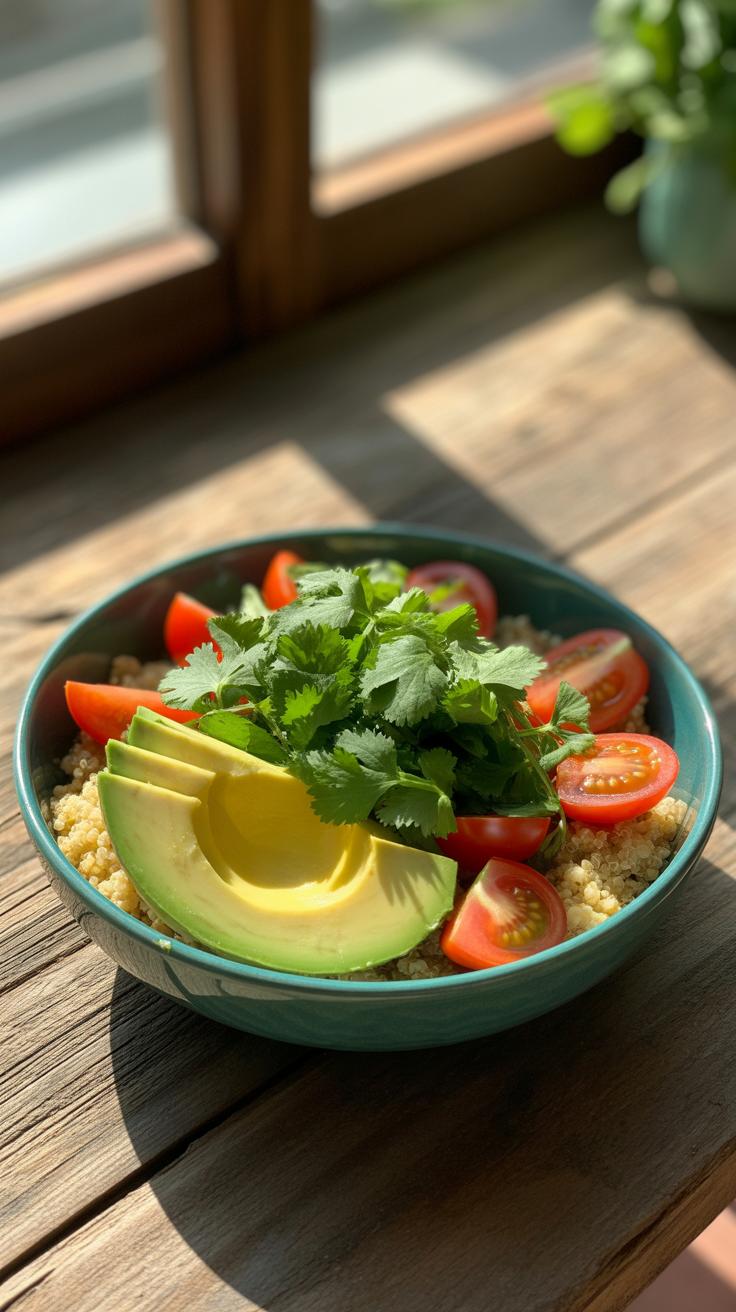Introduction
Eating healthy does not have to be expensive. Many people believe that maintaining a nutritious diet will increase their grocery bills, but this is not always true. There are ways to prepare healthy food dishes that help you save money and still get the nutrients your body needs.
This article focuses on healthy food dishes that cut your grocery budget in half. You will learn practical methods to plan, shop, and cook budget-friendly healthy meals. Additionally, we will provide examples of dishes you can make without spending a lot.
Why Choose Healthy Budget Meals
Eating healthy on a budget might seem tricky at first, but it actually makes a lot of sense—for your body and your wallet. When you focus on meals that provide good nutrition without overspending, you’re choosing to invest in yourself over time. It’s not just about saving money right now; it’s about avoiding future health bills and feeling better day to day. You might think that healthier food automatically costs more. Well, that’s not always the case. Simple swaps and mindful choices can cut costs sharply.
Besides cutting grocery bills, picking budget-friendly healthy meals often means cooking at home more. This can give you more control over ingredients, portion sizes, and reduce waste. Plus, there’s satisfaction in preparing your own food—it might even motivate you to stay on track with healthier habits.
On the flip side, eating cheap but unhealthy frequently comes with hidden expenses like fatigue, frequent doctor visits, or taking time off work. So, when you choose healthy budget meals, you’re potentially lowering these risks too. It’s a bit of a balancing act but an achievable one with some planning and curiosity about affordable nutritious options.
How Healthy Meals Improve Your Health
Good nutrition isn’t only about avoiding illness—it’s about building strength, focus, and feeling decent most days. When you eat fruits, vegetables, and whole grains regularly, your body gets needed vitamins, fiber, and antioxidants. For example, fiber helps digestion and keeps blood sugar steady, which you might notice in better energy levels throughout the day.
You might find it interesting that including a variety of plant-based foods reduces inflammation and supports your immune system. It sounds simple, but this can actually impact how often you get sick or how fast you recover.
Of course, everyone’s body reacts a little differently, so what works well for one person might need tweaking for another. Still, pushing for nutrient-rich, simple ingredients generally helps your heart, boosts mental clarity, and maintains a healthy weight. These benefits don’t require expensive superfoods—regular whole food staples can do the trick just fine.
How Budgeting Saves Your Money
Planning meals ahead and sticking to a grocery list can save you more than you expect. Without a budget, it’s easy to pick up extra processed snacks or convenience foods that quickly add up. When you decide what meals you’ll make, you shop smarter—buying in bulk or choosing seasonal produce often costs less per serving.
Prepping meals in advance also cuts down on last-minute takeout or expensive convenience items. Imagine cooking once and eating multiple times from the same batch—it saves time and money. And leftovers? They’re your unintentional money-savers.
Some people hesitate to budget tightly because they worry meals will be repetitive or boring. But actually, variety comes from simple swaps of grains or vegetables, which don’t usually increase costs much. It’s more about how you mix ingredients and build flavors at home than how much you spend.
So, by combining budgeting strategies with healthy choices, you get a double win—less spending, better nutrition. Have you noticed the difference it makes when you plan meals versus grabbing whatever’s on sale on a whim?
Master Meal Planning for Savings
Getting a grip on meal planning can feel like a chore, but it’s one of the best ways to really cut down your grocery bills. The trick is to think ahead—beyond just what sounds good today. Here’s a checklist that might help you map out a week’s worth of meals without overspending or wasting food.
- Start by checking what you already have in your pantry, fridge, and freezer. It saves money if you plan meals around those items first.
- Pick a few versatile staples—rice, beans, frozen veggies—that you can use across several meals to keep ingredients simple and affordable.
- Plan meals with overlapping ingredients. For example, if you buy a bunch of spinach, use it in a salad, then in a pasta dish later in the week.
- Create a rough schedule: what meals can you batch-cook? Think soups, stews, casseroles—they store well and save time later.
- Set aside a shopping list column for essentials and one for treats or special ingredients so you can prioritize your spending.
- Consider your week’s activities. If you have busy evenings, plan quicker meals or ones you can reheat.
Now, what about leftovers? They get a bad rap but can actually be a lifeline if used right. Instead of seeing leftovers as last night’s sadness, try to reimagine them. Turn roast chicken into tacos, leftover veggies into a stir-fry, or yesterday’s grains into a salad. This way, you’re not just eating the same meal twice but stretching your ingredients further.
It’s easy to overlook leftovers, but saving them can lower your shopping needs significantly. Think: less impulse buys because you’ve already got a halfway-made meal waiting. And sometimes, I admit, leftovers inspire new recipes I never planned on. It’s a bit unpredictable, but probably worth it.
Smart Grocery Shopping Tips
How to Choose Affordable Healthy Ingredients
Picking nutritious ingredients without overspending can feel tricky, but it’s possible if you know what to look for. One simple rule I follow is to focus on seasonal produce. When fruits and vegetables are in season, they tend to be cheaper and fresher. For example, buying berries in summer is usually less expensive than grabbing them in winter. It’s a small detail that can make a big difference over time.
Also, consider buying staples like beans, lentils, and whole grains in bulk. They last long, and their price per serving drops drastically. I once bought a 10-pound bag of brown rice. It lasted me months. That said, bulk buying isn’t always better if you can’t use the items before they spoil, so plan carefully. Sometimes, smaller packages of frozen veggies or fruits can be just as economical and save you waste.
How Discounts and Sales Can Help You
Sales and discounts can feel like a gamble, but they often offer real savings if you’re flexible. It helps to look at weekly store flyers or use apps that notify you of deals. If you see a good fix—for example, chicken breasts marked down near their sell-by date—consider buying a bit more and freezing what you don’t need immediately. It’s one way to shop smart without compromising nutrition.
Coupons might seem outdated, but they can still save you a few dollars here and there, especially for pantry staples. Pair coupons with sales for double savings. But be cautious—don’t buy items just because they’re discounted if you don’t normally use them. That’s how expenses sneak back up. I sometimes clip coupons, but only for foods I’ve tried and liked before, so I don’t end up with products gathering dust.
Convenient Healthy Cooking Techniques
When you’re juggling a busy schedule, spending hours in the kitchen just isn’t realistic. That’s where some clever cooking methods come in, helping you save not only time but also energy—while keeping your meals tasty and nutritious. You might find that with just a bit of planning, these approaches can make your healthy eating goals much easier to maintain without demanding more effort.
One-Pot Meals for Easy Cooking
One-pot meals are a game changer, especially if you don’t enjoy piles of dirty dishes. Cooking everything in a single pot or pan means less time scrubbing and more time doing other things—like relaxing or prepping your next meal. Plus, combining ingredients early allows flavors to mix in a way that’s sometimes hard to replicate when components are cooked separately.
Think soups, stews, or even one-pan roasted veggies with grains and protein. These meals often require fewer ingredients, which helps keep costs low. They also tend to hold onto nutrients better since nothing gets drained away or lost during multiple cooking steps. You may find that these dishes aren’t just practical but surprisingly enjoyable to eat again and again.
Batch Cooking and Freezing Tips
Cooking large amounts at once can feel like a lot of work upfront, but it pays off when you have ready-to-eat, healthy meals waiting in your freezer. Preparing several portions of dishes like chili, pasta sauce, or vegetable casseroles lets you avoid last-minute takeout or unhealthy convenience foods.
When freezing, dividing food into meal-sized containers helps you manage portions easily—no thawing too much or too little. Label your containers with the date and contents to keep track. Sometimes I forget about meals I made weeks ago until I stumble upon them—a pleasant surprise, really. You might want to experiment with which meals freeze well, as some lose texture, but most soup- and stew-based dishes hold up fine.
What’s your take on batch cooking? Do you find it saves you stress or does it feel like extra kitchen time? Either way, it’s worth testing because it can lower your grocery budget by stretching ingredients across many meals.
Comparing Protein Sources Budget vs Expensive
When it comes to protein, cost and nutrition don’t always go hand in hand. You might find yourself staring at pricier cuts of meat, thinking they must be the best choice. But that’s not necessarily true. Some affordable protein options pack a serious nutritional punch without emptying your wallet.
Plant-based proteins like beans and lentils usually come at a fraction of the price of animal proteins. They’re rich in fiber, vitamins, and minerals, which adds value beyond just protein content. On the other hand, certain animal proteins deliver all essential amino acids more efficiently but tend to cost more.
Picking proteins that nourish well while fitting your budget means looking beyond just the price tag. How often have you weighed protein quality against cost? It can be tricky, especially since taste and preparation time also matter.
Plant-Based vs Animal Protein Costs
Beans, chickpeas, and lentils often cost pennies per serving. Canned or dried, they last long and can stretch meals for days. Plus, they come with health benefits like lowering cholesterol and stabilizing blood sugar.
Animal proteins, like chicken or eggs, usually cost more upfront. But they sometimes offer quicker meal options. Red meats and seafood tend to be the most expensive. If budget is tight, relying heavily on these could strain finances.
Could you swap some meat meals for beans without feeling shortchanged? Maybe, though it depends on your tastes and how much effort you want to put in preparing dishes. Sometimes, mixing both makes sense.
Best Cheap Protein Options
Here’s a short list of proteins that deliver nutrition and savings:
- Dry beans and lentils – Shelf-stable, filling, and protein-rich.
- Eggs – Versatile, quick to cook, and an excellent protein source.
- Peanut butter – Convenient and satiating with healthy fats.
- Tofu – Affordable plant protein that adapts to many flavors.
- Canned tuna or sardines – Budget-friendly and packed with omega-3s.
- Chicken thighs – Cheaper than breasts, flavorful, and nutrient dense.
Choosing from these options, you can create meals that keep nutrition high and groceries low. The question really is how you balance taste, prep time, and budget to fit your daily life. What’s your go-to protein that checks those boxes?
Examples of BudgetFriendly Healthy Dishes
Affordable Vegetarian Recipes
Think about meals built around lentils, rice, and whatever vegetables are in season. Lentils are a powerhouse—cheap, full of protein, and filling. For instance, a simple lentil stew with carrots, onions, and canned tomatoes can make several portions for just a few dollars. Toss in some rice to stretch it further. You can vary the spices—cumin, turmeric, or a pinch of chili—to keep it from becoming too dull.
Vegetable stir-fries with frozen veggies and brown rice work well too. Frozen vegetables keep longer and often cost less than fresh, while still being nutritious. You might add garlic and soy sauce to lift flavors without spending much.
Simple Meat and Fish Dishes
Cheaper cuts of meat don’t have to be ignored. Slow-cooking tougher cuts like chicken thighs or pork shoulder breaks down their fibers and makes them tender without demanding much effort or fancy ingredients. One slow-cooked pork stew with potatoes, carrots, and onions can feed a few days, cutting down costs.
Canned fish, like tuna or sardines, is another overlooked option. They offer omega-3 fats and protein, and pairing canned tuna with a salad of chickpeas, cucumber, and lemon juice makes for a quick, cheap, and healthy meal. I’ve found that you can keep these cans on hand for spontaneous meals or when you’re running low on fresh groceries.
How to Avoid Common Budget Pitfalls
Skipping Planning and Overspending
One common mistake people make when trying to eat healthy on a budget is skipping meal planning. It may seem like a hassle, but without a plan, you end up buying things you don’t really need. Those random snacks, extras for recipes you never make, or double purchases can quickly add up. Then, there’s the waste—fresh veggies going bad or unopened packages tossed in the trash. It’s frustrating, right?
Making even a simple grocery list based on meals you want to cook can save a surprising amount of money and stress. Planning helps you use ingredients more efficiently. For example, a bag of carrots bought for one dinner might also star in a soup or snack for the week. Without a plan, it’s easy to miss those opportunities.
Choosing Processed over Fresh Foods
Another downside is leaning too much on processed convenience foods. They might seem cheaper or faster, but they tend to cost more in the long run. Plus, their nutritional value usually can’t match fresh ingredients. Processed items often contain additives or extra salt and sugar, which might lead to health issues—and more doctor visits down the line? That’s something to think about.
Fresh food doesn’t always have to be expensive. In fact, buying seasonal produce, frozen vegetables, or bulk whole grains can be cheaper and healthier choices. The tricky part is resisting that convenience. Cooking meals from scratch takes time, but it also lets you control what goes into your food—and your budget.
Tools to Track Budget and Nutrition
Keeping tabs on grocery spending can feel like a chore, but there are tools that actually make it easier, maybe even a bit interesting. Apps like Mint or YNAB help you set budgets for groceries specifically, letting you see instantly if you’re veering off track. They let you categorize expenses, which means you can spot if you’re spending too much on snacks instead of essentials. It’s kind of like having a personal accountant in your pocket, except without the judgment.
For nutrition, apps such as MyFitnessPal or Cronometer offer detailed breakdowns of calories, macros, and vitamins in the meals you log. You might find that your “healthy meal” isn’t as balanced as you thought. Checking nutrition info while shopping is another smart move. Most retailers provide labels or online nutrition details, but sites like the USDA’s FoodData Central can give more precise info, even on less common items.
These tools highlight how small tweaks—like swapping a pricey cut of meat for beans, or choosing whole grains instead of refined—can stretch both your budget and your health goals. Maybe it feels a bit tedious at first, but once you get the hang of it, tracking can really help you stay on course without feeling restricted.
Your First Week Plan Example
Let’s look at a simple, doable week-long meal plan that keeps your grocery bill low while staying healthy. This plan sticks close to around $5 per day, which might feel tight but turns out surprisingly satisfying. You don’t need fancy ingredients—just straightforward, wholesome foods.
Picture starting your day with oatmeal boosted by a banana or applesauce. It’s easy, filling, and costs mere cents per serving. For lunch, think of a chickpea salad mixed with chopped veggies and a little olive oil. Dinner could be a lentil stew with rice or roasted seasonal vegetables, all hitting that comfort spot without breaking the bank.
Snacks might be simple—carrot sticks, a handful of nuts, or perhaps some yogurt if you find a good deal. This way, you avoid expensive processed snacks but still keep your energy up.
Daily Meal Ideas Under Budget
Here’s a rough idea of costs for a typical day, which hovers just under $5 if you buy in sensible amounts:
- Breakfast: Oatmeal with sliced banana – about $0.70
- Lunch: Chickpea salad with cucumbers and tomatoes – approximately $1.50
- Dinner: Lentil stew with rice and steamed greens – around $2.50
- Snack: Handful of raw carrots or a small yogurt – roughly $0.70
Each meal mixes protein, fiber, and nutrients, though you might need to tweak portions based on your appetite. You might wonder if this gets boring, but a little spice variety—cumin, paprika, garlic powder—works wonders.
Shopping List for the Week
Buy these staples once, and they’ll cover the plan comfortably:
- Oats (bulk if possible)
- Bananas (about 7)
- Chickpeas (dry or canned)
- Brown rice or other whole grains
- Lentils (dry)
- Carrots
- Seasonal vegetables (tomatoes, cucumbers, greens)
- A jar of olive oil or a small bottle
- Basic spices: cumin, garlic powder, salt, pepper
- Optional: yogurt for snacks
This list isn’t exhaustive but enough to keep meals fresh. You may already have some spices at home, which cuts costs further. It’s worth checking your pantry before you shop. Over time, you’ll translate these basics into your own favorites, matching flavors you enjoy without extra spending.
Conclusions
Healthy eating on a budget requires planning, smart shopping, and making the right food choices. By focusing on whole foods like vegetables, grains, and legumes, and mastering simple cooking techniques, you can prepare meals that nourish your body and cost less.
Try the strategies and dish ideas shared here to lower your grocery bills while improving your diet. Healthy food dishes that save money are possible, and with some effort, you can enjoy tasty and nutritious meals every day without overspending.

